David duChemin's Blog, page 4
July 10, 2017
Is Composition Over-rated?
Sometimes the strangest things show up like unexpected gifts on the doorstep – like the comment I got just yesterday that told me (I’m paraphrasing) that all my talk about composition and storytelling was nonsense. The less-paraphrased version was that scenes are what they are and they compose themselves. I’m not going to lie: I would have laughed if it didn’t seem so surreal to me, but it gave me something to blog about, so I’m grateful.
Arguing that some photographers pay too much attention to composition feels a little like arguing that some chefs just pay way too much attention to flavour; that the dodgy leftover stuff in the fridge is what it is and will cook itself.
When I stopped long enough to give his ideas a fair shake (it didn’t take long) I did begin to wonder how many photographers would never in a million years express this kind of thinking, but might be subconsciously infected by the idea.
I’ve hinted before that I’m knees deep in making a training resource that is about creative composition and the elements and decisions that make a compelling photograph (spoiler: it’s called The Compelling Frame). So this is all very much on my mind. And the more I work on it, the more I learn and the more galvanized my belief is that composition is everything and it’s so much more than is conventionally taught.
The well-meaning photographer who accused me of paying too much attention to composition also said moment is everything. That’s too easy. 10 points for sincerity and for the focus on spontaneity and intuition. But an F for practicality. Let’s say you have a great moment, that all moments are not equal, and you’ve just photographed a deeply human, profoundly touching moment. Does that make it a deeply human, profoundly touching photograph? Not likely. What if that moment occupies so little of the scene that those of us who were not there can’t really interpret the moment for what it is? What if your crop is so tight you miss key visual clues that help up makes sense of it or feel it’s impact. What if the subjects that make up that moment are so surrounded by clutter that there’s no separation from the background and I can’t make out the moment at all? What if your angle implies something about that moment that you didn’t intend? What if other elements draw my eye so much more? And what about things like balance and tension? What about the way my eye reads a photograph? Does that not matter?
Moment is everything only once you’ve used composition to make it so. It no more translates into a photograph without our help than anything else does: story, mood, emotion. A great moment is rare and wonderful. A photograph that gives that great moment its best expression requires so much more than pointing and shooting and clinging to the idea that this lazy approach is noble and “instinctive.”
Nothing about photography is instinctive. It only feels that way once we’ve put in the time being intentional about identifying what makes a compelling photograph and learning how to use the tools of the visual language. This applies to every great thing at which we direct our lens. The “greatness” of that thing. The beauty. The mood. The grandeur. The intimacy. It only comes through in the photograph because of the decisions we make.
As more and more photographers join our ranks, it is not the “instinctive” photograph that will grab our attention, or hook our emotion. It is the intentional photograph that will do so. The one that intentionally goes deeper, that uses all the tools we have with purpose. It will be the photographer who master not only her tools (the camera, the lens) but her materials (line, light, and moments, among others) and used them in service of creating something that is the best expression of the wonder we see before us – it will be the photographs of that photographer to whom people respond. And only with that intentionality will it all one day come so naturally that it feels (or looks to others) that it’s instinctive.
Take your time out there, friends. Look at the scene from all angles. And be ruthless about what you include and exclude. Do it playfully, do it with joy, but don’t let it be accidental. I wish great light and moments and stories just leapt onto my photographs with no help from me, but wishing doesn’t make it so.
Because this stuff isn’t just instinctive and our cameras still really have no idea how to give a scene it’s best expression or to say what we want to say, that’s up to us. What do you think? Questions? The comments are open.
I won’t be posting next week, I’m spending time at the cottage with family and unplugging as best I can. If you need a fix, I’ve just posted Episode 64 of the Vision Is Better Show on YouTube – How to Choose Camera Gear. And Also Tequila. Enjoy!
PS – If you want articles like this emailed to you, I have a sometimes-weekly newsletter called the Contact Sheet and though once in a while I’ll send a blog post when I think it’s important, it’s almost always exclusive articles and inspiration you can only get by being on my mailing list. I won’t spam you. You can always unsubscribe. But it’s good stuff, I promise. Subscribe to the Contact Sheet here. Want a sample? Here are the last two – Choosing The Best Camera Settings (It’s Not What You Think) and Better Compositions with Stronger POV.
Share this Post, Share the Love!
July 6, 2017
Learning to See
Good morning. It’s Thursday, July 06, and how this week just crept by while I wasn’t looking, I have no idea. But I do have another episode of Vision is Better for you, and with it a chance to win a signed copy of The Soul of the Camera. I hope you’re having a great summer (for those of you in the Northern Hemisphere!) and a happy belated July 04 to my friends in the US of A to our south.
I’m off next week to see family in Ontario for a few days, back to spend a weekend in Calgary at an event for which there are still a few spaces – The Soul of the Camera, an evening lecture on July 21st, and a book-signing on July 22 at 10am. If you’re in or around Calgary, come say hello!
After that I’m off to Tonga to freedive with humpback whales and their calves and to fulfill a lifelong dream, and then it’s Spirit Bears in BC’s beautiful Great Bear Rainforest. It’s been almost 2 months since I got on a plane – the longest break I’ve had in years – but I do miss having my camera in my hands and being in front of something majestic!
June 26, 2017
Kick out the Crutches.
Good morning, friends. Here’s a Monday morning kick in the pants. I’m posting it here for a couple reasons. The first is that it’s Monday morning and we all need a kick in the pants. The second is that I’ve been working like a maniac on a project I’m releasing in September and it’s been 5am mornings for a while and it’s all-video all-the-time and, well, I just haven’t had time to also write a blog post. But I also want to get you over to my YouTube channel more – that’s where I’m putting more of my creative, teaching, and ranty efforts these days. I’d be thrilled if you joined me there, subscribed, and interacted there as well. I’ll keep blogging, but for now I’ll be more often on YouTube. See you there!
June 19, 2017
Stop Looking. Start Making.
I recorded an episode of Vision Is Better last week (Episode 61) and just posted it. I want you to watch it. Please. Some of you need to see this – to hear this – and since I’m not sure which of you that is I’m just going to go ahead and recommend you all take 7 minutes or so to watch it. Then come back here. Click here to open YouTube and watch Vision Is Better Episode 61 in a new tab.
I want to encourage you to keep at it. To turn your attention from that miraculous camera in your hand from which we expect so much and to direct it where it belongs: to you. To your desires and longings, thoughts, opinions. Some of us – me included – have made so big a thing out of vision that it intimidates us into paralysis. It’s become some holy grail in our lives and we’re hoping when we find it all will be well. We’ll finally do the art we were made to make, the stuff we’re longing to make. We’ll finally have the clarity we need to take the first steps. We’ll finally stop being so afraid. We’ll finally be the artists, the photographers, the writers we know we can be.
Bullshit.
Vision IS your longing. Vision is YOU. Stop looking so damn hard for it. Instead: start making. Making photographs, making stories, making, making, making.
Because we don’t find our vision so we can make art. We make art so we can find our vision.
We don’t make art half as much to express ourselves as to explore ourselves and the world around us. And then we make more art. And we go deeper.
You know who makes art? Makers. Doers. The paint-stained and the dust-covered. The ones who pick up their cameras and walk out the door without a hint of inspiration or the foggiest notion if anyone is even watching, or cares – but they go to find out, to see if it’s there. Because they care. You know who doesn’t make art? The dreamers, the blamers, the excuse-makers, and the I-could-have-done-that’ers: anyone who doesn’t do the work for whatever reason: fear, laziness, even something as noble-sounding as the pursuit of vision. And that’s OK. The world will survive if you don’t make your art. But you won’t.
The less you make, and do, and try, and fail, and the longer you wait to do those things, the more your vision will sink down into the sediment of all the trivial shavings of life, the detritus, the frivolous. Only doing brings it back to the surface.
There is no certainty in art-making. I’m not sure there’s much certainty in life, period. We’re guided only by our imaginations, not an set of assembly instructions from IKEA ( for which I’m thankful: my imagination is way easier to follow) Art isn’t about knowing. Or certainty. It’s about making decisions. Risking. Peering into the unknown. It’s about the great What If with which we daily wrestle. But it’s wrestling to which we were born and in which we thrive. It’s the weaving of a better story. It’s the discovery of a deeper part of ourselves than we ever imagined we could contain. It’s there. Call it vision, soul, intent, whatever, it is there. And we find only by starting the work. Just doing the thing that pleases you for no other reason than that it pleases you. But doing it.
Don’t worry about your vision. It’s there. Just go make. Listen to the little voice, the what if. Play. Stop taking it so damn seriously that choosing one direction over another keeps you tied to the crossroads, unmoving. There are fewer wrong turns than we think.
Share this Post, Share the Love.
June 12, 2017
3 Shortcuts to Deeper, Stronger Images.
There’s not a day goes by that I don’t see photographers being offered some shortcut or another on a craft that ultimately frowns darkly on shortcuts. Since I started teaching photography I’ve had one unwavering desire for my students: that they learn to make photographs that they love, in a way that they love, of the things that they love or feel deeply about. My suspicion of shortcuts stems from that, knowing that most short cuts are not merely a detour but a dead-end. They replace learning rather than encourage it. They get us to a desired end without an understanding of how to get back there. So the dopamine dealers sell us another “snap shots to great shots” Photoshop tutorial or one-click action set and get us all back to our computers to furiously polish our turds, and we never learn to make the kind of deeper photograph that already has an emotional core. We learn to make eye candy. It gives us the same rush any candy does. And it can give us the same crash when we realize only too late that we’re not mastering anything, yet alone our craft, with this mad rush from one preset to another, one new piece of gear to another, one new “hot trick for landscape photographers!” to another. We aren’t learning; we’re kidding ourselves. And I know. I was there. I just wanted hope: hope that my images could get better. They can. But not with something you buy.
“The fact is that relatively few photographers ever master their medium. Instead they allow the medium to master them and go on an endless squirrel cage chase from new lens to new paper to new developer to new gadget, never staying with one piece of equipment long enough to learn its full capacities, becoming lost in a maze of technical information that is of little or no use since they don’t know what to do with it.” ~ Edward Weston
In the end shortcuts and diversions cost us time. They cost us attention span and energy. They rob us of the scenic route through the landscape in which we actually learn. They aren’t shortcuts at all. Not if you’re walking towards mastery of this craft, that beautiful place where flow gets a little easier, where the gear and the technique becomes no less important but less a thing we actively think about as we create, and certainly not as important as our vision or intent. If you want shortcuts consider these, because unlike many shortcuts, these actually get us there and won’t waste our time.
Study Photographs Not Cameras.
Studying the ins and out of cameras and buttons and dials and settings is helpful, even necessary to a point. But it will only make you really good at camera-using. Only studying photographs will make you better at photograph-making. We need to know and understand the image itself. We need to speak its language. It’s no good just revering old dead guys, and too-few old dead gals, who make beautiful images. If you want to really revere them – study their photographs. Learn why they work. Learn to read an image so you know how others will read them, so you can better make images that people have a chance at reading one way or another. Learn what visual elements and devices you find compelling so you yourself can make images that scratch your creative itch.
Focus Your Attention, Not Just Your Lens.
If you want to go deeper you need to begin – when the time is right, and only you know when that might be – to focus your attention and your efforts. There’s so much to be said for learning broadly, playing with all kinds of different techniques, especially at the beginning. Try it all on for size. See what you can use, and what you prefer not to. But when you begin to hunger for deeper work and not just sharp and well-exposed work – you’ll probably find that you can only go deeper if you stop going so broadly. Leaning to make sharp and well-exposed photographs is important, but it shouldn’t take you 5 years. Most high-school students get workingly competent with this in a semester. It’s probably time for you to begin making some choices – create some bodies of work. Begin to get really good at a couple things, not passingly mediocre at everything. Begin seeking more intentionally chosen mentoring and critique. If we are more familiar with our cameras than we are with the subjects we’re photographing, we won’t be creating deeper work.
Expose Your Soul, Not Just Your Sensor.
This is another way of me begging you to show me something of yourself. I’ve alluded several times recently to the cliched idea of a photograph being worth a thousand words, each time pointing out that those thousand words only matter if we actually have something to say. If you want to make deeper images, that depth has to come from you, not the sensor. Forget sensor size: how big are your ideas? Ignore low-light sensitivity: it doesn’t hold a candle to your own sensitivity to the world around you. Water-sealing and dust-resistant lenses and bodies? Hell, our cameras take more risks than some of us take personally. If you really want better photographs and “better” means something more to you than “I can use a camera,” then you must says something. And the more honest, vulnerable, authentic, or human that thing is, the greater the chance that you’ll be heard for the thing you say and not only the way you say it. No one praises an author for the fonts they use.
Look, maybe it’s the coffee speaking, but I just don’t want you wasting your precious time running in circles. Life’s too short, and this craft is too full of possibility, for us to bullshit each other. Some people just want to make sharp images and play with new toys, and if that fires all the right places in your brain, then go for it. Really. But I suspect you want more because no one would put themselves through reading my poet-warrior ranty stuff if they were looking for camera reviews and an article on edge-to-edge sharpness. If you want more, if you want deeper – then you have to choose paths that take you to deeper places.
Want more? Want to go deeper? Check out The Soul of the Camera, The Photographer’s Place in Picture-Making at SoulofTheCamera.com
Share this Post, Share the Love.
June 5, 2017
The Photographer’s Role
It comforts me to know I’m not a lone nutter standing on the edge of sanity shouting into the wind. In fact it turns out there’s really nothing about what I teach that better voices before mine have not taught. My voice is just an echo, but it echoes something I think is important – that this craft is a human pursuit and it is the human behind the camera that will make our photographs what they are.
How we see is more important than what we see. Why we press the shutter button, to paraphrase Mary Ellen Mark, is more important than when we press it (though that too is important). Here are some of those voices, all of them pointing with reverence to the photographer’s role in picture-making (conveniently that’s all the sub-title of my new book, The Soul of the Camera)
“All the technique in the world doesn’t compensate for the inability to notice.” ~ Elliott Erwitt
“It’s the photographer, not the camera, that is the instrument.” ~ Eve Arnold
“When people ask what equipment I use, I tell them my eyes.” ~ Ansel Adams
“I realize more and more what it takes to be a really good photographer. You go in over your head, not just up to your neck.” ~ Dorothea Lange
“Artists are controlled by the life that beats in them, like the ocean beats on the shore.” ~ Dorothea Lange
“Whether he is an artist or not, the photographer is a joyous sensualist, for the simple reason that the eye traffics in feelings, not in thoughts.” – Walker Evans
“Stare, pry, listen, eavesdrop. Die knowing something. You are not here long.” ~ Walker Evans
“You don’t make a photograph just with a camera. You bring to the act of photography all the pictures you have seen, the books you have read, the music you have heard, the people you have loved.” ~ Ansel Adams
“The single most important component of a camera is the twelve inches behind it!” ~ Ansel Adams
“Life is your art. An open, aware heart is your camera. A oneness with your world is your film.” ~ Ansel Adams
“There are no rules for good photographs, there are only good photographs.” ~ Ansel Adams
“There is nothing worse than a sharp image of a fuzzy concept.” ~ Ansel Adams
“You don’t take a photograph, you make it.” ~ Ansel Adams
If you like these and resonate with them, you’re going to love Soul of the Camera, a beautiful black and white hardcover that explores the role of the photographer in making images. You can find more information here, including downloadable sample chapters, a new audio interview with me, reviews from those that had a chance to read it before it hit the shelves, and links to Amazon, etc., so you can get your hands on your own copy.
Share this Post, Share the Wisdom.
May 28, 2017
5 Ways to Make Deeper Images
In the coming weeks I’m going to be talking a lot about making images with soul, and being the source of that spark in our images. More than ever I believe, in our enthusiasm about the astonishing marvels our cameras can be, we’ve forgotten that in photography, to quote Eve Arnold “it’s the photographer, not the camera, that is the instrument.” We are the soul of the camera, if it’s to have one at all. When I think about defining what I mean when I talk about creating images with soul, I think it’s about a couple things: depth and connection. On a bigger scale I think it’s about humanity, but that doesn’t mean it has to be about humans – landscapes can be very soulful. It’s about making photographs that connect deeply, that resonate. Here are 5 ways that I think we can increase our chances of making images with soul, or spark. Images that connect.
Go Deep and Take Time
The longer you take with a subject, whether that’s a person or a landscape, the deeper you will be able to understand them, and with that understanding the more you will be aware of the possibilities. You will also have more possibilities because you’ve taken the time for them to happen. The more time you spend, the deeper you can go. If you can spend 5 minutes, you can probably spend 10. If you can spend 20 minutes you can probably spend 40. If you’re traveling, forget doing ten cities in ten days. See two cities for 5 days each. The time spent will allow you to see better, will allow you to get past the easy and the obvious, and in the case of human subjects, will give them time to get used to you, and drop their guard. More time allows you to see more and that’s the first task of the photographer who would make deeper images.
Express Stronger Mood and Emotion
With time comes increased perceptiveness on our parts, and increased vulnerability on the part of the people we photograph. This leads, potentially, to stronger mood and emotion in the images, but that also comes from our choice of composition, of light, of POV (point of view), and of which story we choose to tell. Importantly, our choice of moment will make or brake a photograph, either bringing deep emotion or none at all. Which specific moment you choose, and being able to anticipate it and capture it is everything. A laugh has an apex, so does a pensive look, a romantic glance, or the welling of a tear. Wait for those deeper expressions. Something more vulnerable, less guarded. Steve McCurry put it beautifully when he said we wait “until the soul drifts into view.”
Embrace the Mystery
Leave room for the imagination to fill in some of the blanks. Let me process a little ambiguity in your image. My imagination is stronger than anything you can put into the photograph, but if you don’t give it a little mystery, something to chew on, it won’t engage. Deeper images are OK with some of the mess and ambiguity of life. Questions will always connect better, and for longer, than simple answers will. Make me think. Don’t give it all away.
Be Clearer on Subject
Making sure your images are about something, not merely of something, will give our minds and hearts a handle on to which we can hold. And then, whatever that image is about – make sure it’s really about that. Don’t make me guess, this is not the place for mystery. Learn to isolate, to exclude the unnecessary. Sometimes including more information, more details, only lessens the impact. If I’m asking what it is you want to show me in this image, I’m asking the wrong questions. Be really clear with yourself about which emotion you want to show or evoke, or which story you want to tell, and then use your visual language tools – aperture, shutter speed, optics, POV, composition, etc – to focus my attention and emotion. Images that try to do too much end up being spread too thin and lose the power they might otherwise have had if they were more specific about their subject.
Care Deeply
If you don’t care, why bother? Don’t mail it in. Don’t waste your time or mine on something you aren’t invested in. Show me something true. Show me something heartbreaking or laugh-provoking. Show me something that angers me. Just don’t show me something that bores either of us. Dig deep. And if you don’t really care about it, don’t put it out there. The big struggle for photographers right now is the sheer volume of visual noise out there. We will gain attention not by producing more images, but fewer images with greater depth and soul. Life is too short to photograph everything we love with any amount of insight or passion, why turn your lens on anything else but that which stirs something in you?
I’m thrilled to tell you that my new book, The Soul of the Camera, The Photographer’s Place in Picture-Making is beginning to ship. If you know how to focus your camera and make a decent exposure, and want your images to provoke more than likes and the odd “Great capture, man!” then this book will change the way you make photographs. Take a moment to visit SoulofTheCamera.com – there’s a short video, downloadable sample chapters, a new one-hour interview with me about the topics discussed in the book, as well as links to get your own copy.
Tell Others About This Article.
May 17, 2017
Postcards from the Revillagigedo Archipelago
Good morning from Mexico’s sunny San Jose del Cabo! I got off the Nautilus Belle Amie yesterday after 10 days at sea and another astonishing series of underwater encounters that blew my mind. Here are a small handful of them, including one of my dive buddy and good friend Jason Bradley after this one solitary black Jack (the kind of fish, probably not his actual name) bit him on the finger. In defense of the Jack, Jason was probably poking him; I’d bite Jason too if he poked me.
Now I’m stuck in Cabo waiting for my homebound flight tomorrow, enduring the hell of this sunlit place with blue water and a nearby margarita bar and wifi for the first time in 10 days. So it’s mostly work, work, massage, margarita, work, work. Don’t pity me, I chose this life. When I get home I’m knee deep into a couple projects, including the continued revamp on the way I communicate with my audience and friends (that’s you). One of the things I’m doing is re-focusing my Craft & Vision Contact Sheet – making it a little more personal, and using it to teach instead of only promoting my books. It’s like another blog delivered by email – short articles on topics like portraiture and making deeper images rather than just eye candy. It’s one part philosophical, one part practical, and one part “here’s this week’s discounted deal o’ the week, I hope it helps.”
If you are signed up for my Contact Sheet and are reading them, I’d love your feedback. Is this change in direction helpful? What would you like to see covered or taught? No pressure. If something comes to mind, let me know in the comments.
If you are not signed up for my Contact Sheet, but would like to get exclusive short articles, discounts, and the occasional giveaway, you can sign up here.
When I get home I’ll be working on a short series about personal projects and releasing that on YouTube on my Vision Is Better show. I’ll make sure to keep you posted, but if you’ve got questions about personal projects and creating bodies of work, you could leave those in the comments too.
Finally, if you enjoy this work, you can see more of my underwater black and white portfolio all in one place here. It’ll get updated soon, but I don’t often remind you where you can see more of my work, so feel free to poke around.
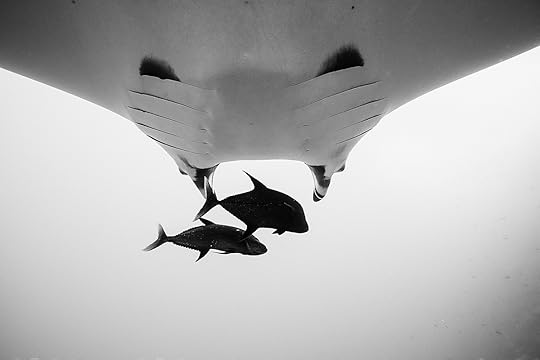
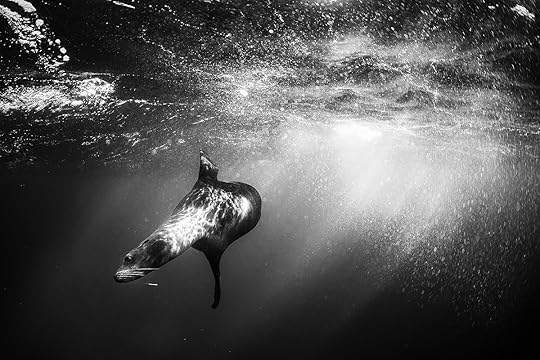
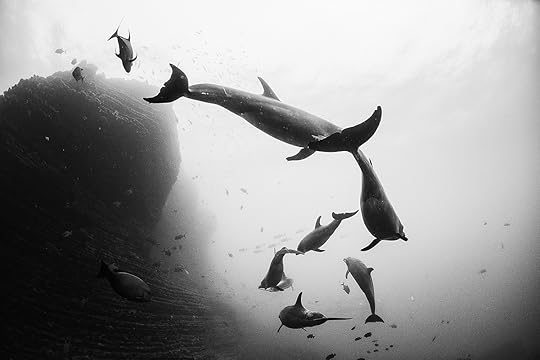
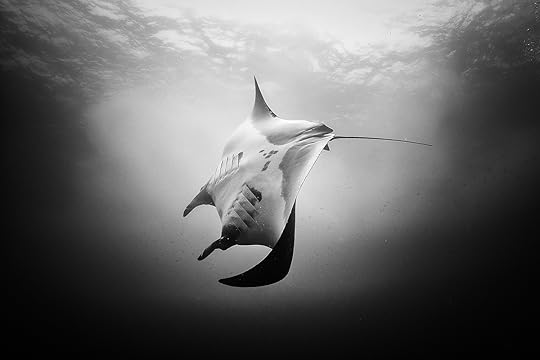
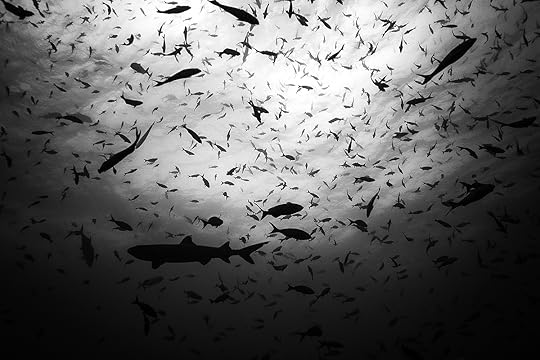

April 27, 2017
Postcards from Bahamas: Sharks!
A friend recently talked to me about his photography was driven by some of his fears, noteably the fear of getting old. I think some of my recent work taps into this a little, both in terms of what I am photographing, and how I am doing it. I think leaning into fear is a good thing; it’s healthy to understand our fears. So if there’s a little bit of dark beauty in these images it’s probably from that. I spent the last week in Bahamas on board a little research vessel, the R/V Kate, with six other divers and many, many sharks. Here are some of those images.
Before you dive in (ahem, sorry about that) to these, would you do me a favour and watch, and comment on, this short 3 minute video I made? I’m at a crossroads and I’m hoping you can help me understand what kind of struggles, frustrations, questions, and ruts you are facing in your photographic and creative life. For 5 random commenters (please leave the comments on the YouTube video itself, it’ll help me keep them in one place) I’ll send out a signed copy of The Soul of the Camera when it’s out in June. This is a huge help to me and will help determine the content of this blog and other resources for the next year or two. Thank you so much!
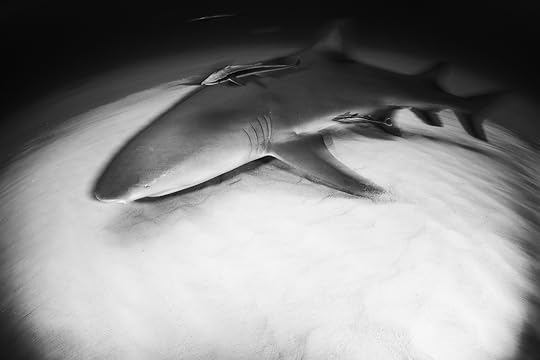
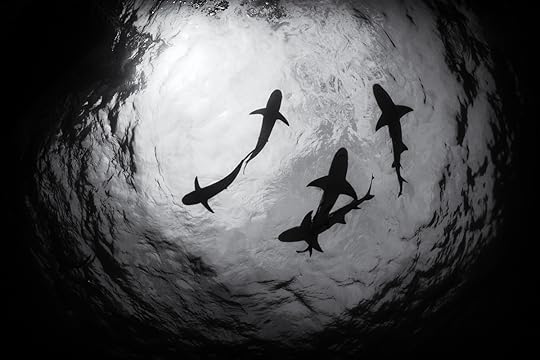
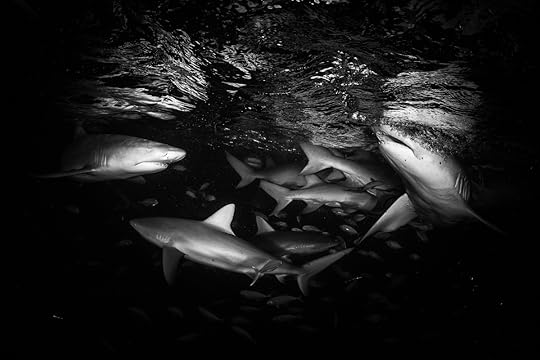

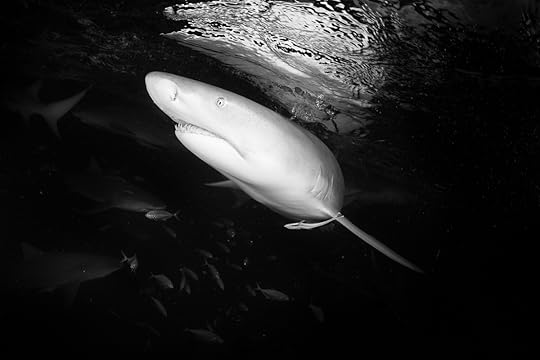
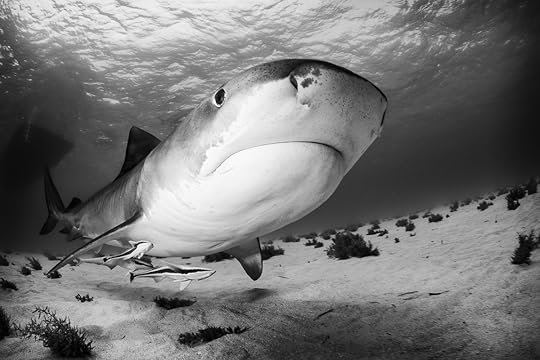
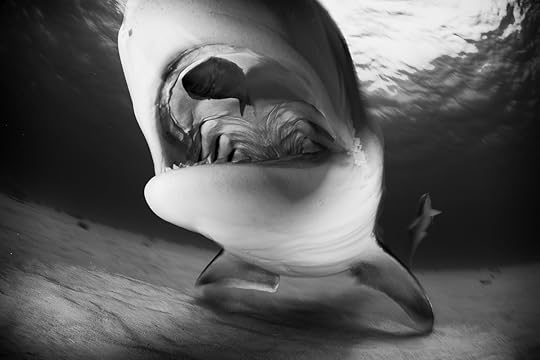
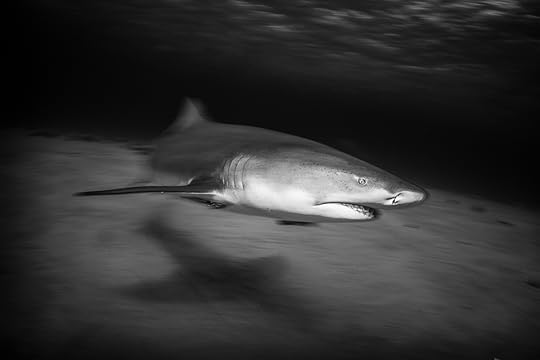
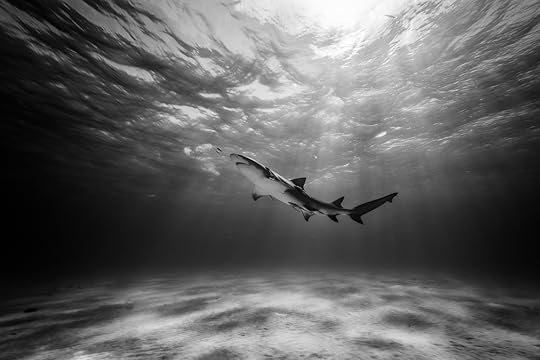
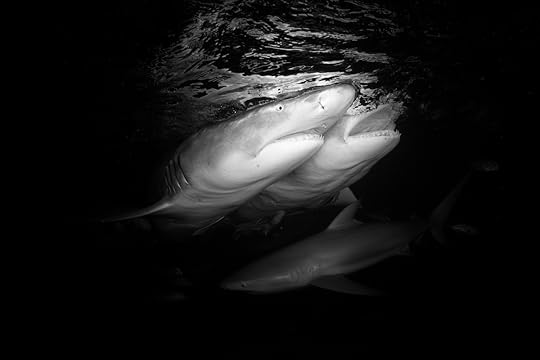

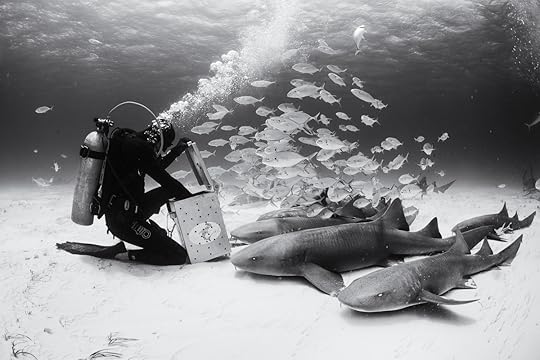
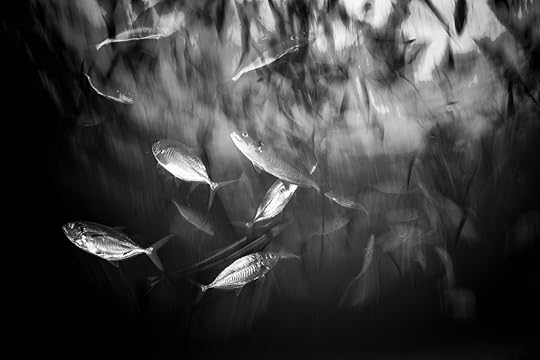
April 24, 2017
Why Go Monochrome?
I’ve been told it’s a curious decision to photograph so colourful a place as India in black and white, as though colour itself is the defining characteristic of the place therefore the most obvious way to photograph it. But there’s so much more to India than colour, though there’s plenty of that too. There is life and chaos and texture. There’s motion and story and relationships and brief moments on the streets. India is so much more than blue walls, or yellow and green rickshaws, and while it’s true that colour might be the most obvious choice, perhaps that alone is a good reason not to be seduced by it. I’m alreading playing with ideas about photographing the Holi festival in black and white next year. Call me crazy.
Here, in no particular order, are three reasons why I am photographing in black and white theses days, and a couple thoughts about that choice.
One. I love black and white photographs and that should be reason enough. I love the mood and the shadows, the reduction of the elements in the image to line and tone. I spent my early photography years in darkrooms at home and at school, bewitched by the monochrome images coming out of the trays, so perhaps there’s a nostalgic value attached to it, but I think it’s more than that.
Two. Eliminating colour helps me better get to the emotional core of the image, without the seductive pull of colour. Furthermore, colour is much harder to work with if what you are trying to achieve is some unity between images. The real world, especially a place like India, doesn’t always consult us on the colour palettes it chooses. When that colour palette is what draws our eye and not the glance, the gesture, the moment, it’s time (for me, at this point) to eliminate it.
Three. Monochrome images have a different visual pull than colour images and more latitude when it comes to manipulating that pull. Using tonal adjustments, for example, you could make a red sari light and blend into a scene or dark and more obvious. Colour images take this kind of tweaking, along with dodging and burning, with a little less grace: the changes seem too obvious and can kill the illusion that photographs depend on. I like the interpretive options black and white gives me.
Someone asked me recently how we create images that are more than just eye candy. There’s not an easy answer to this. I think it’s one of the main struggles of the photographer, or any artist, really. But I think much of the reply is in this: we have to have something to say. Eye candy may be many things, sweet and lacking substance, but it feeds nothing more than the eye. I want my images to have an emotional core to them. A soul. I want my images to have a chance at being the most powerful they can be. For now, that means I explore black and white again.
Stripping the colour out is the fastest way for me to see if my image has that soul, or if, indeed, it’s just eye candy. It’s not the only way. Plenty of colour photographs have soul, and there is no shortage of monochrome images that lack it.
Working in black and white is no more a guarantee of making art than photographing in colour automatically results in mere eye candy. But for now it’s the medium that best helps me get there. It resonates. Remember all that talk about vision that I used to do? This is that. Allowing my curiosity, my vision, my gut, to guide me into, and through work that I like.
Trust your gut. It won’t always lead you to safe places. It’ll mislead you along the way, especially in the beginning when it knows nothing, and it’ll take you to places you learn hard lessons. But on the strength of those lessons it’ll get a little better honed and you can trust it a little more. Most of all, I don’t know another way to do this, to create something authentic, something that feels right, other than to trust that nagging little voice, the one that’s always asking “What if?” and won’t be pacified until I try. Right now my gut tells me black and white gives my images the weight, the sobriety – hell, even the gravitas – that I’m feeling about the world right now. it’s still hopeful, but it feels a little darker in the shadows, if you know what I mean.
If you want more conversations like this, about what makes stronger photographs, beyond the buttons and the dials and usually technical stuff, consider reading one of my books. My latest book, The Soul of the Camera, The Photographer’s Place in Picture-Making, (which is all black and white) is available now for pre-order and should be in your hands around the middle of June.
Share this Post, Share the Love.



